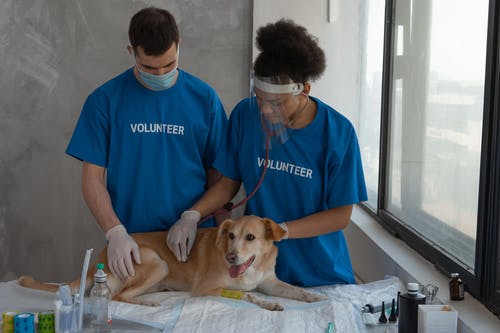Common Veterinary Surgeries Explained
Despite the fact that most pet owners fear it, most veterinary surgeons perform pet surgical treatment on a weekly basis. Several pet owners are curious regarding the most common surgical treatment and why our dogs need them. These procedures can range from normal spaying, neutering, tooth removal, ACL repair and more life-threatening problems such as cancer therapy. The four most common methods executed by vet surgeons are listed here to help you understand what the procedures involve:
Spaying & Neutering
Spaying and neutering are the most often performed surgical treatment by vets. You have several alternatives when it involves spaying or neutering your pet cat. Consult your veterinarian regarding your options to ensure that you may make the most effective decision for you, your family, and your pet.
A vet removes specific reproductive organs during surgical sterilization.
- Ovariohysterectomy, sometimes referred to as a “spay,” is when a female dog or cat’s ovaries, fallopian tubes, and uterus are taken out. This treatment stops her from reproducing and destroys her heat cycle and breeding urges.
- Orchiectomy, or “neutering,” is when a male canine or cat’s testes are removed. This surgery prevents him from reproducing and decreases or removes his breeding activity.
Surgical ACL Repair
A ruptured cranial cruciate ligament (CCL or ACL) in the knee is one of the canines’ most common orthopedic conditions. Most dogs respond well to surgery and are back running and playing within a few months. After surgery, canines must spend one night at the medical facility and be restricted from moving for 8-12 weeks.
Dental Surgery
A feline or dog’s oral health is closely linked to their general health and wellness. When teeth deteriorate or infections develop, animals may require prompt treatment from a pet dentist. The risks will vary depending on the necessary surgery; the following treatments are routinely carried out in pet medical facilities.
- Tooth removal
- Tooth dental fillings
- Palate defects
- Oral tumor removal
- Jaw fracture management
Cancer Surgeries
This is an extensive area, but tumor removal from all over the body represents a considerable fraction of pet treatments. Tumors of the lungs, liver, thyroid and parathyroid glands, skin, spleen, anal sac gland, and other organs are generally taken out. Some masses are benign, and surgery can help treat them. Other lumps are cancerous, which means they will spread (metastasis).
Notify your vets at comprehensive facilities like Afford-A-Vet Animal Clinic of strange lumps, bumps, or issues during any health examinations. The secret to a good recovery is detecting and treating canine cancer early on.
What to Expect After the Surgery
Anesthesia-related troubles are always a probability during the surgical treatment. The anesthetic medicines and the surgery’s after-effects might affect your pet for a couple of days following the treatment. However, your pet is expected to make a full recovery following surgery.
Allow your pet to heal in a peaceful and comfortable environment, and keep kids and other pets away for the first several days. Serious injuries, such as burst ligaments, are unlikely to go back to 100 percent capability. The pet owner must regularly care for the patient to reduce the risk of re-injury, such as avoiding high-impact exercise, especially for habitually energetic canine breeds.


